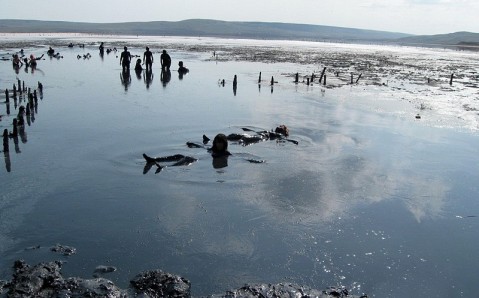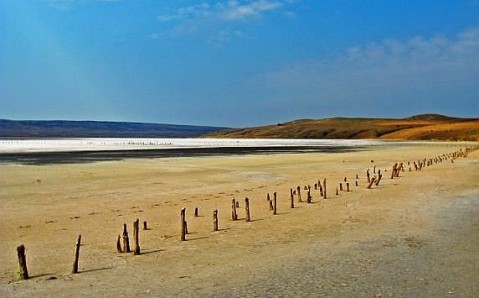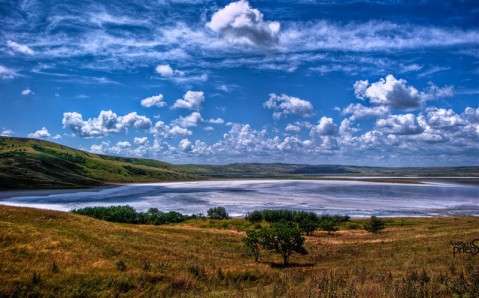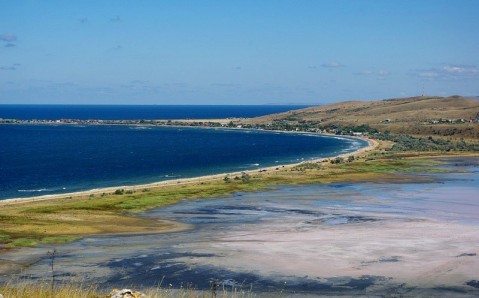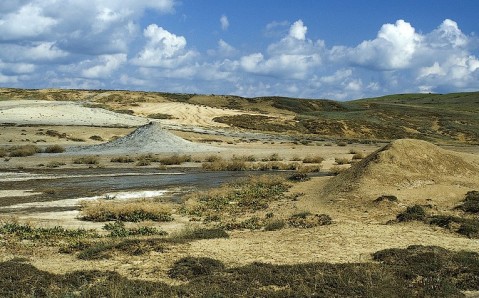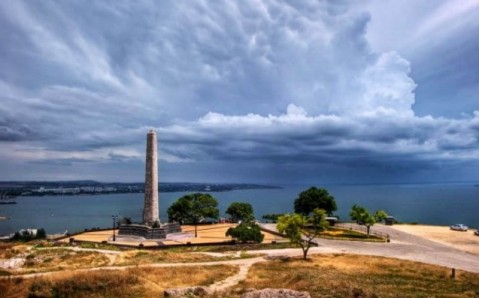Chokrak Lake
The salty Chokrak Lake, situated on the Kerch Peninsula near the village Kurortnoye, is a true natural wonder. It is notable for its unique curative mud, whose composition has no analogues in the world. The mud is formed on the lake’s bottom by hydrosulfuric springs and mud volcanoes, as well as by algae and microorganisms from the sea water, which feeds the lake through a narrow sand and shell bank, separating it from the Azov Sea.
Chokrak mud’s curative abilities were discovered in ancient times, when the territory of the modern Kerch was occupied by Panticapaeum – the capital of the powerful Bosporan Kingdom. It was the silt, lifted from Chokrak Lake’s bottom, that the antique Tsar Mithridat VI Yevpator used to cure pain in his joints. In those times, unique mud was a valuable export good of the ancient kingdom, and the lake where it was produced was considered to be sacred.
In the Middle Ages the curative Chokrak’s silt was used by Crimean Khans and by slave traders from Kafa (modern Feodosiya). The later ones used lake’s mud in order to fix their ‘live goods,’ who lost her health and attractiveness during long hiking.
Chokrak Lake’s curative mud is the most environmentally clean one in Crimea. It consists of the whole complex of mineral substances and microelements that have anti-inflammatory and anti-oxidant action, improve metabolism, strengthen immune system, and improve breathing. Chokrak’s highly mineralized mud is used to treat musculoskeletal and respiratory systems’ disorders, skin diseases, infertility, and to cleanse and rejuvenate the skin. In addition to the mud, Chokrak Lake’s shores house a large number of mineral springs.
Despite the uniqueness of this place, it lacks infrastructure: there are no pensions, hospitals and rehabilitation centers around Chokrak. Coming to this amazing natural area for recreation and health improvement, tourists usually set up a tent camp next to the lake, or stay in the nearby village Kurortnoye.
Getting here. Go from Kerch bus station to the village Kurortnoye, and then walk or drive to the lake.

 Crimea
Crimea

